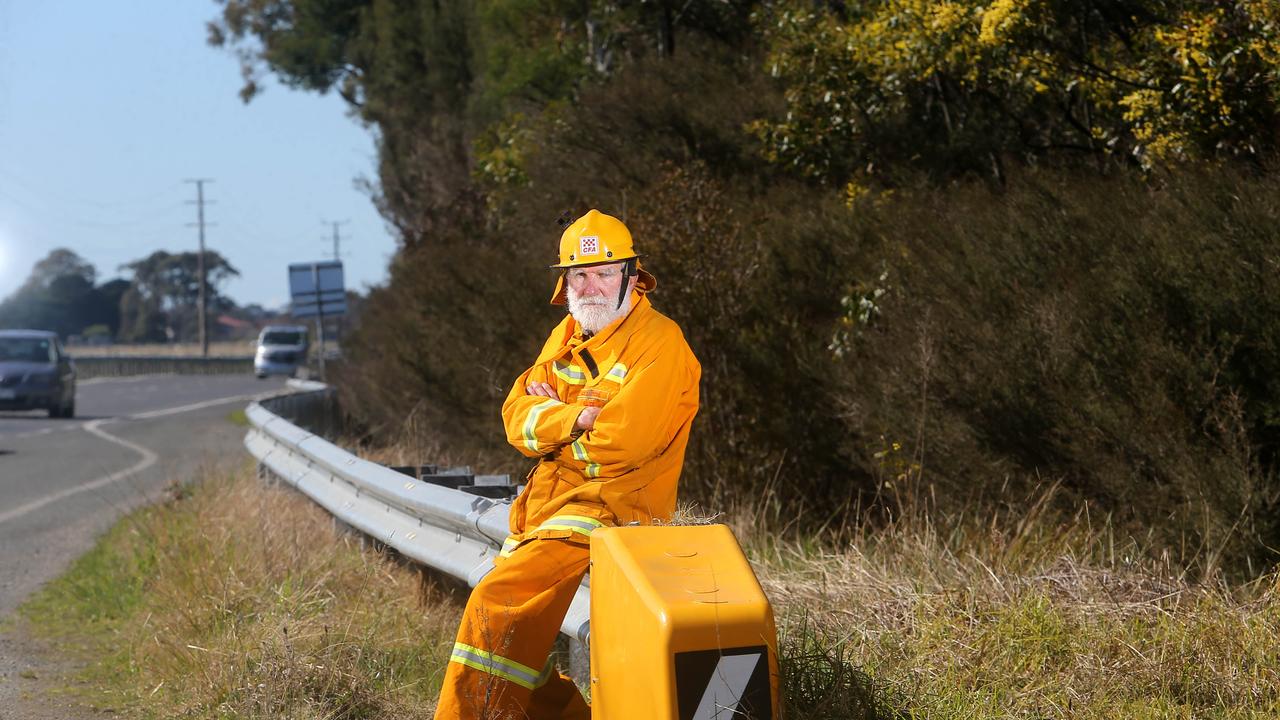Roadside fuel loads ready to explode: CFA volunteers abandon burns
Year-long permit delays and onerous litigation, safety and biodiversity rules have led CFA volunteers to abandon roadside burns.

Victorian roadsides are turning into future fire corridors, as CFA volunteers abandon fuel-reduction burns due to bureaucratic red tape.
“Most brigades have given up planned burns because the process created by CFA upper-middle management — in response to litigation, safety and biodiversity legislation — has become too restrictive and too protracted,” Sarsfield CFA brigade volunteer Graeme Brownrigg said.
A survey of 32 East Gippsland brigades conducted by Mr Brownrigg has shown just four were still conducting significant fuel reduction burns.
“CFA upper management, and possibly Forest Fire Management Victoria, have become more concerned about public backlash and negative reaction from the vocal green movement and have lost the motivation to protect lives and property via Planned Burning,” he said.
The CFA’s own burn plan for this season shows it has approved just 16 burns, across the entire Gippsland region — from Bass to Mallacoota — covering 197ha, 13 of which are roadside burns.
In Victoria’s highest risk bushfire zones to the north and east of Melbourne (districts 8, 13 and 14), the CFA burn schedule shows 20 burns for 2022-23, covering 186ha, with just seven planned for 2023-24.
East Gippsland Hillside volunteer and former captain Nick Barton said getting roadside burns done under the CFA’s onerous rules was “pretty well impossible”.
“The last section (of the Princes Hwy) we burnt was 10 years ago, and there’s some areas that haven’t been done in decades” Mr Barton said. “Community safety is impacted.”
As happened on Black Saturday in 2009, Mr Barton said roadsides acted as wicks that fires travelled along before flashing out into forests and farms.
Mount Taylor CFA volunteer sector commander and strike team leader Don Roderick said the build-up of fuel loads was not just a problem on major highways, with volunteers struggling to undertake burns on critical access roads to smaller settlements.
“When I first joined 40 years ago we’d burn sections of the Bullumwaal Road (north of Bairnsdale) in stages every three to five years, up where there’s about 50 homes,” Mr Roderick said. “It’s their only escape route, but none of it has been burnt for about 10 years.”
CFA flow charts show brigades must lodge applications for planned burns at least 12 months in advance, so their regional Vegetation Management Officer has time to organise ecological and cultural heritage assessments, plus any site preparation work.
“One year prior to the burn the VMO will assess (and cost) the required works on site and prepare a job plan specifying the track, asset protection and hazardous tree work required - total time approx. 4-7 months,” the flow chart states.
The VMO must then identify ecological vegetation classes of significance, calculate tolerable fire intervals - to ensure vegetation is not burnt too frequently, plus get biodiversity officers’ advice on species listed under state and federal conservation legislation.
Traditional owners must also be contacted if there are cultural heritage sites within 2kms, such as scar or birthing trees.
The flow chart also shows risk ratings must then be calculated in regard to the value of the burn in protecting homes and lives.
Mr Roderick said the situation was made worse by the fact that District 11, covering a region from Bairnsdale to the NSW border, had just one VMO to service about 50 to 60 brigades.
He said once the CFA granted a burn permit local brigades were even more constrained by demands that ensure excessive numbers of trucks and crews attend, plus organise traffic management contractors, all of which could be cancelled at the last minute due to changing weather conditions.
Mr Brownrigg said brigades also had to find a volunteer qualified as a Planned Burn Operations Officer, of which there was a shortage due to CFA inaction on training.
CFA District 11, from Bairnsdale to Orbost, has just four PBOOs qualified to undertake complexity rating two type burns, the most common burn level in east Gippsland.
“This is unlikely to change in the short term due to the Recognition of Prior Learning (RPL) process still being developed, and the training of PBOO’s stalled due to the loss of RTO recognition.
The Weekly Times has previously reported on brigades in western Victoria walking away from planned burns, with Volunteer Fire Brigades Victoria chief executive Adam Barnett warning “red tape and ever-increasing bureaucracy were strangling the ability of brigades to undertake planned burns”.
But a CFA spokesman said the fire service had “launched a planned burn program, the Planned Burn Taskforce, to help increase the number of fuel management activities that can be undertaken across the state.
“The Taskforce is comprised of more than 600 volunteers who are activated when required to assist in the delivery of planned burns across Victoria when conditions allow.
“CFA is doing everything it can to further engage its brigades about fuel management activities, particularly in the south east of the state.”
CFA’s Planned Burn Taskforce accounted for 15 fuel treatment activities last year, conducted by 156 members.




